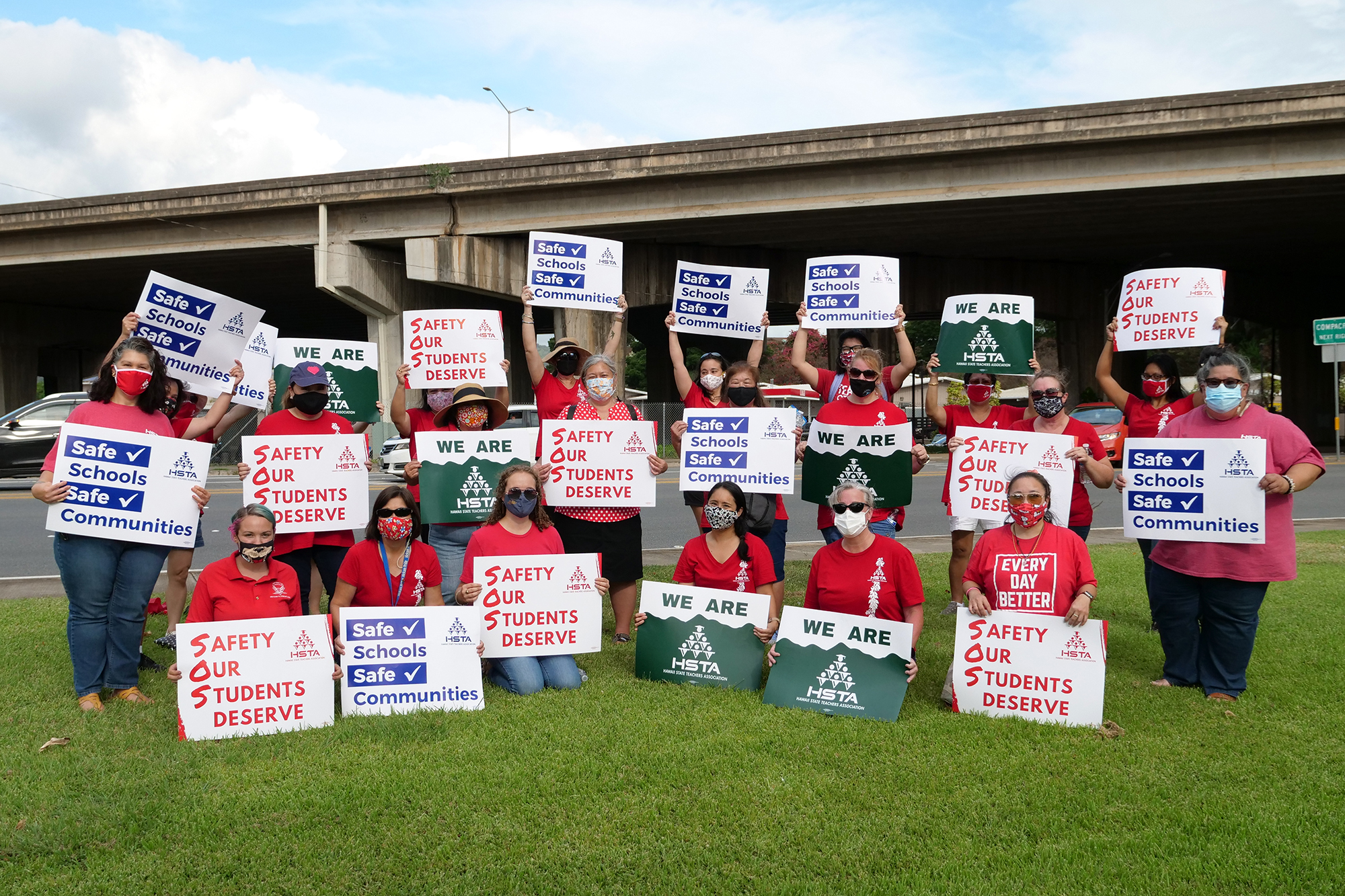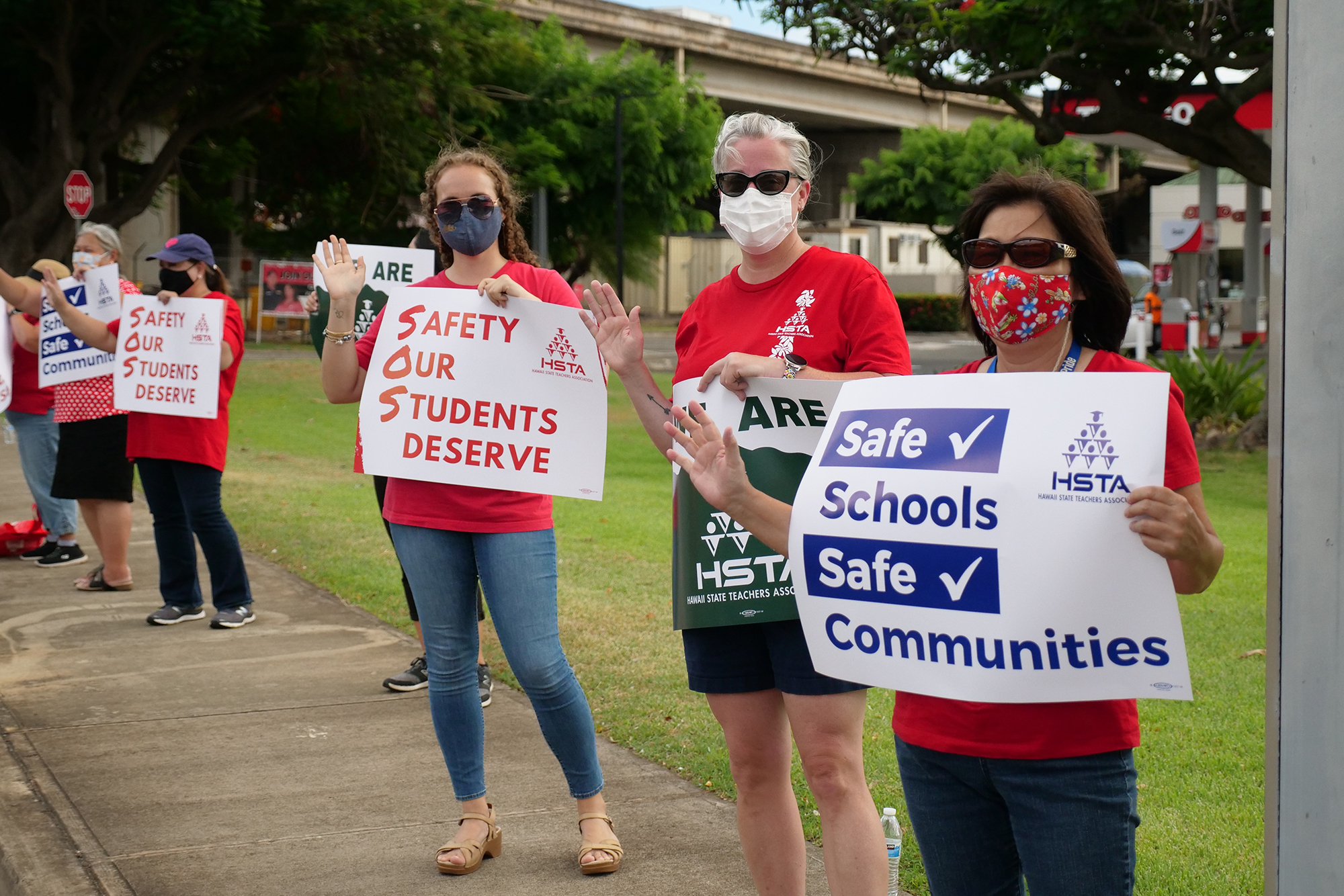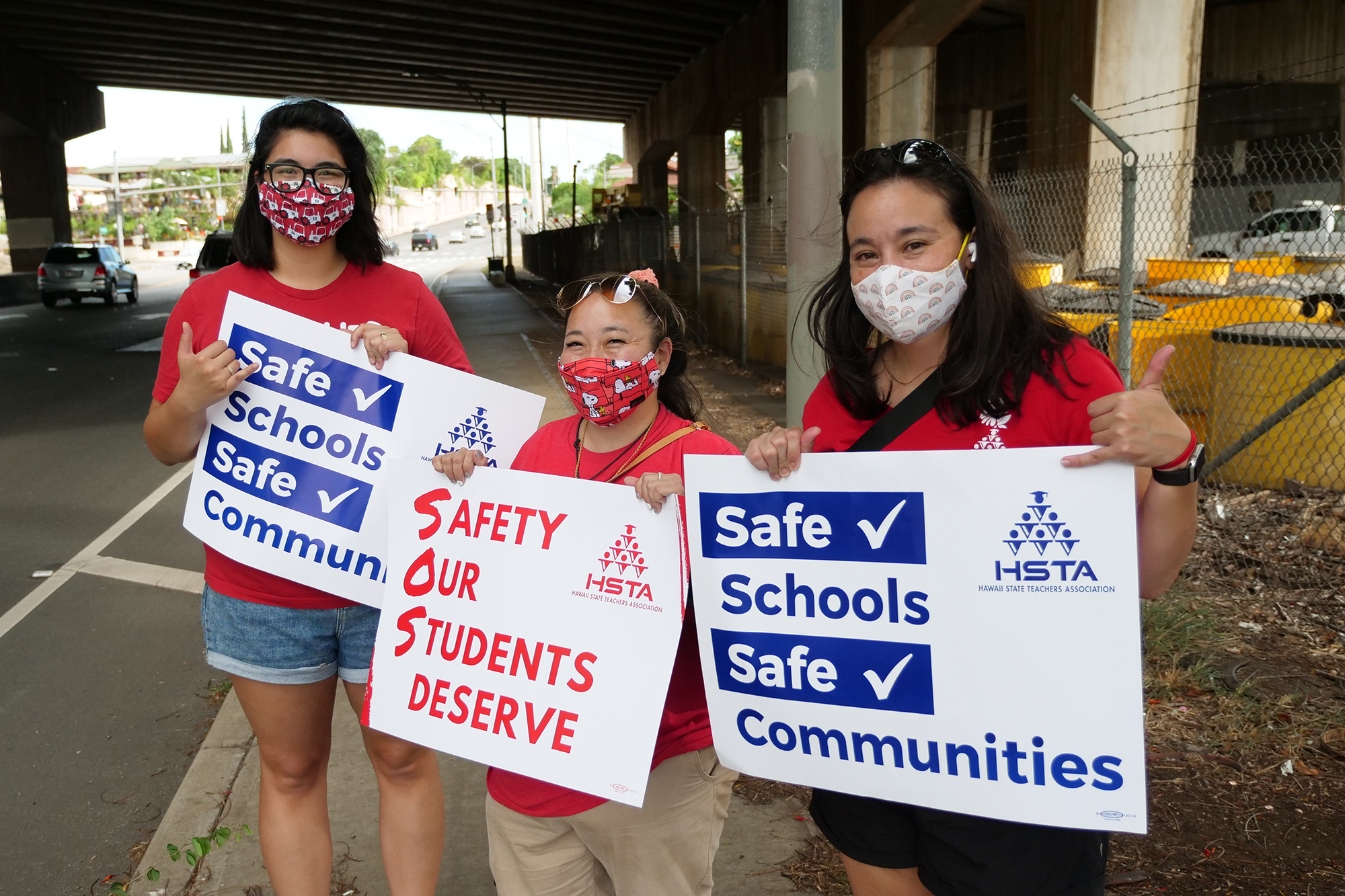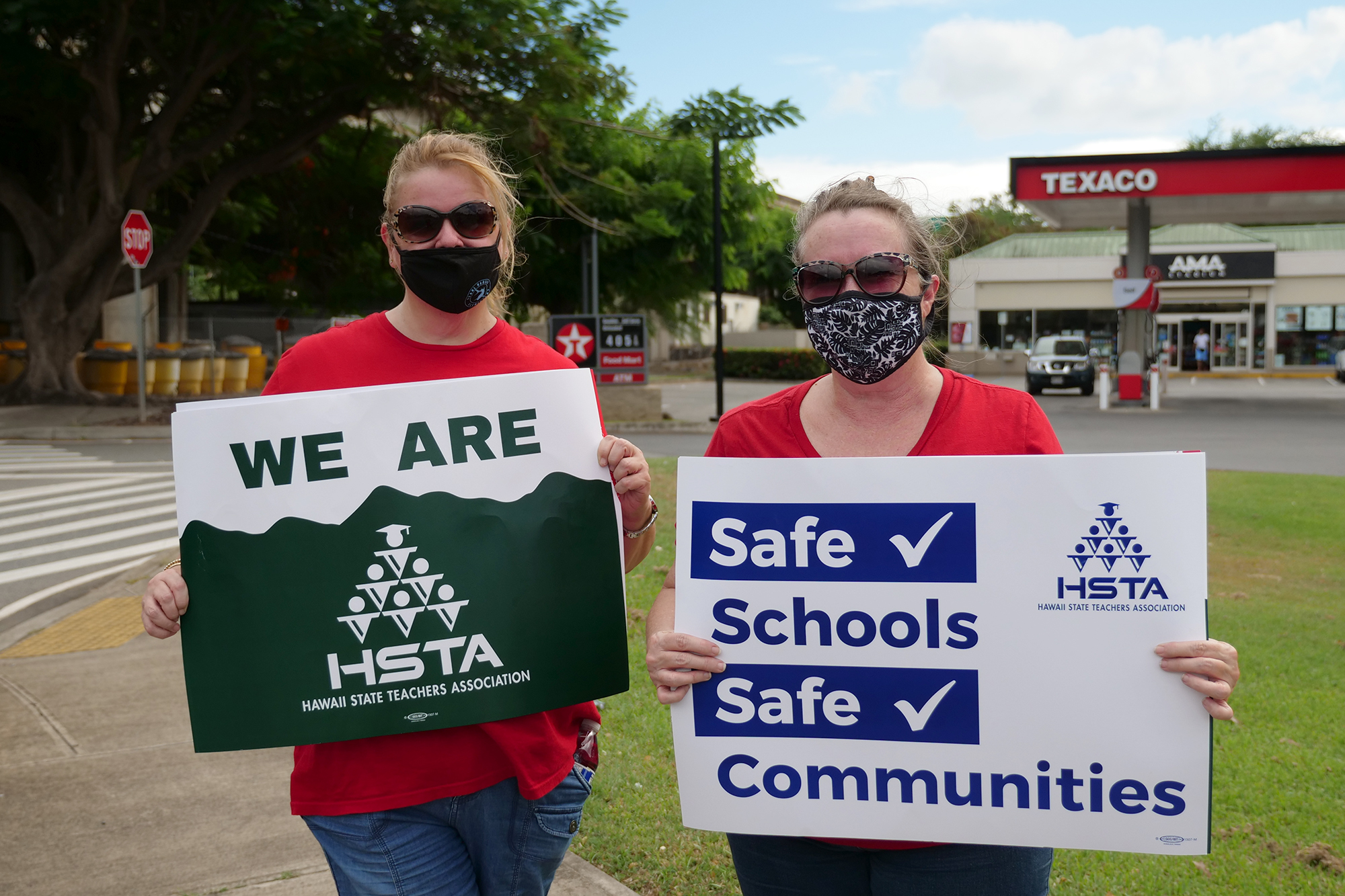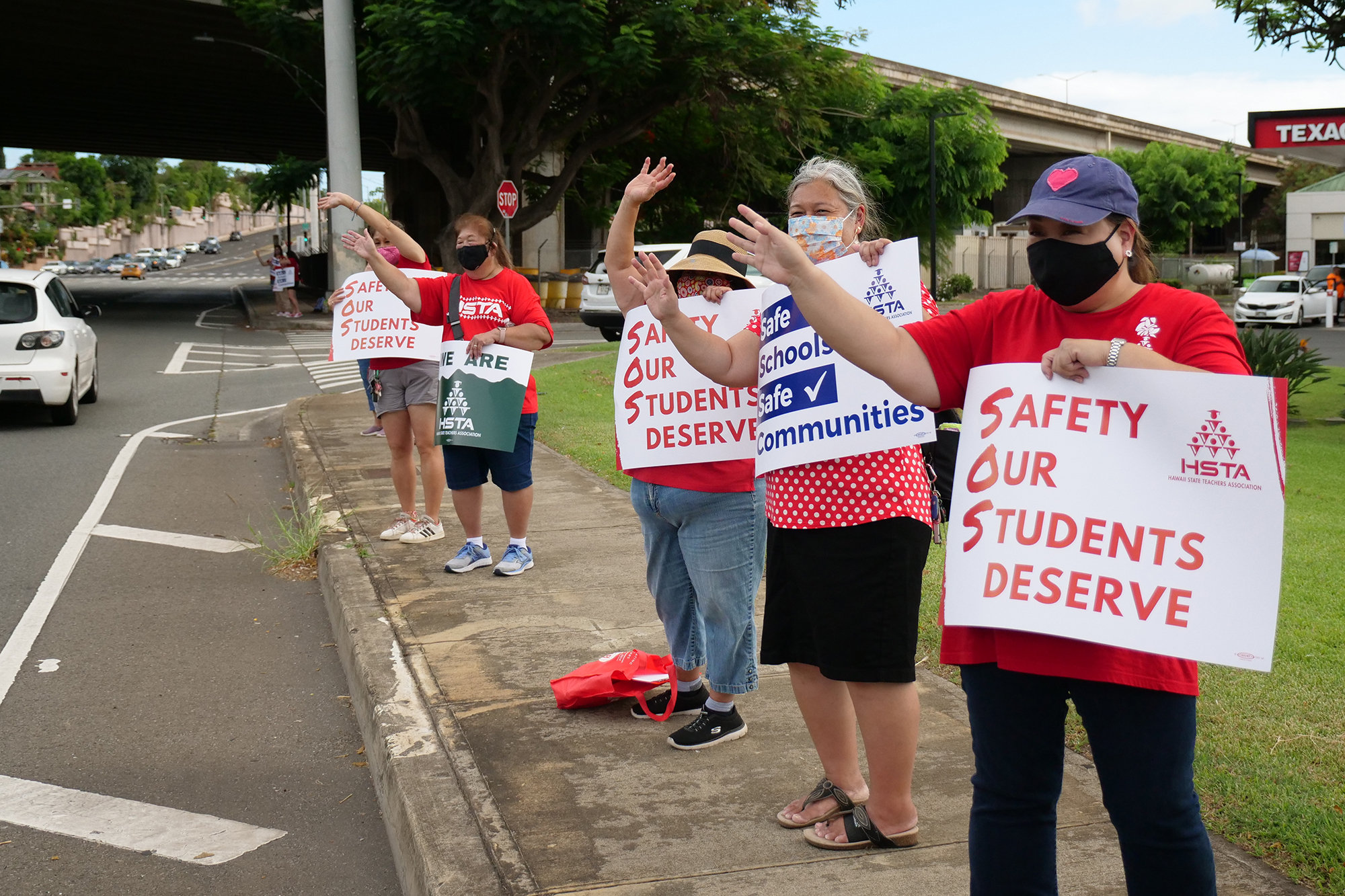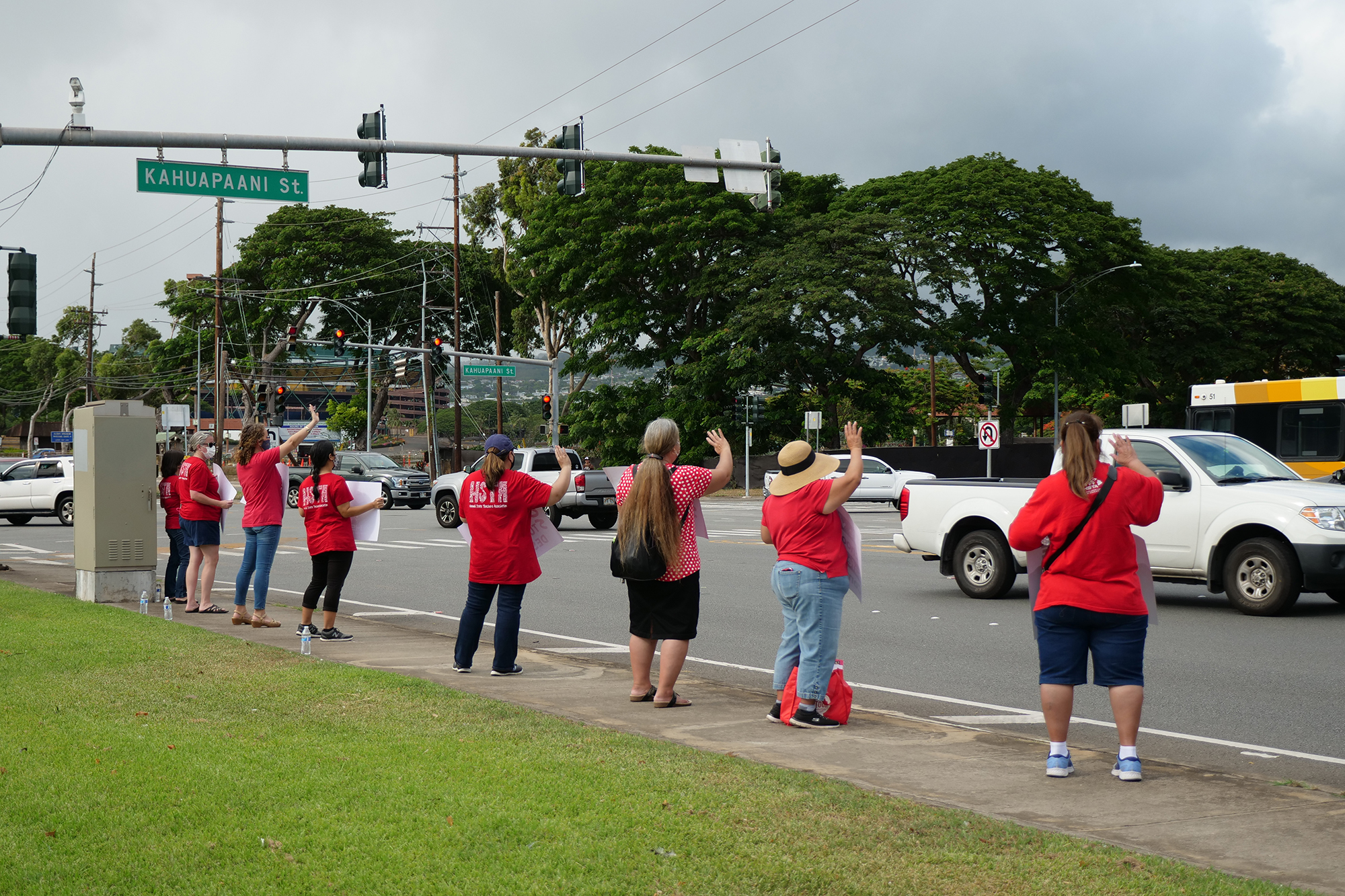‘There’s confusion, and that really impacts the teachers’ morale’
Posted: September 29, 2021
Dozens of educators who work in HSTAʻs Central Chapter on Oahu stood along Salt Lake Boulevard after school Tuesday to share their call for safe schools with pau hana commuters.
“There’s just a ball of emotions. There’s not just one emotion. There’s the fear. There’s the feeling of being lost. There’s confusion, and that really impacts the teachersʻ morale,” said Berta Akiu, a special education second- and third-grade teacher at Mokulele Elementary who also serves as HSTA Central Chapter president. “We’re here to help our students learn. We are here. We are in the classrooms, and we really want to ensure all classrooms are safe for everyone, including the families and the community.”
There are more than 2,100 members in HSTA’s Central Chapter, which stretches from Waialua on Oahu’s North Shore to the Pearl Harbor area.
While the Hawaii State Department of Education and Department of Health issue guidelines, implementation is left up to each school. This has led to gaps in communication and inconsistent responses among schools to critical health and safety issues.
Akiu said a positive case in one school led to the quarantine of an entire classroom, triggering distance learning protocols that were not properly planned or negotiated, while other schools are “still struggling to understand exactly what the procedure is.
“So we would like to have a consistent understanding of guidelines for all schools versus having variants at various schools,” Akiu explained.
The Hawaii State Department of Education and interim Superintendent Keith Hayashi continue to insist schools are safe, health and safety guidelines are being followed, distance learning plans are robust, and there are no staffing shortages. Educators who work on the front lines, however, say these claims arenʻt true.
“Can I get a pair of those rose-colored glasses?” said Michele Sasaki, a kindergarten teacher at Hickam Elementary. “Some schools have the privilege of securing supplies from their parents and communities, but then again, that’s privilege. That’s a community that can afford it, that’s willing and able to provide for the school, whereas other communities may not have that ability. But then that goes back to why are we begging our parents and communities for these supplies to be safe?
“And on top of that, as far as I know, people in the higher echelons of the DOE, a lot of them are not all together. They might be working from home,” Sasaki added. “The Board of (Education) meetings are still virtual, so I mean, there’s definitely a difference in experiences between what’s going on up high versus what people on the ground are doing and what they’re facing.”
The HSTA is calling for solutions to increase communication to all school employees, establish strong, consistent health and safety protocols, and provide a support system to ensure all schools are adequately staffed so educators are not overwhelmed with an onslaught of pandemic-related work.
Akiu, HSTA Central Chapter president, said, “This Delta variant has increased more so the fears, the concerns, being apprehensive to ensure that everyone’s safe, and that’s where the importance of the memorandum of understanding, the MOU, comes into play so that we as teachers know that our employer, the Department of Education is looking out for us, our safety, the studentsʻ safety.”
Educators on all islands are holding informational pickets to raise health and safety concerns outside schools and state offices, and more sign waving events are being planned in the coming weeks.

